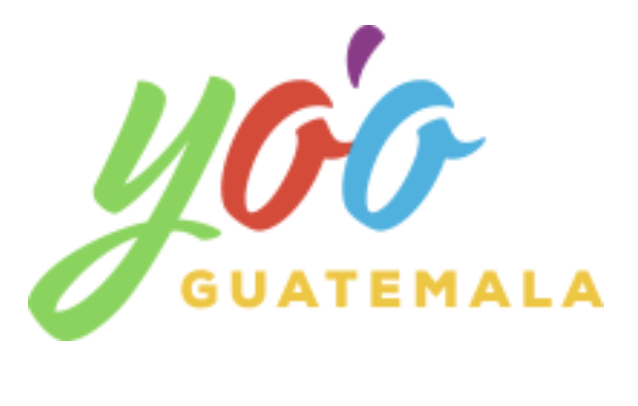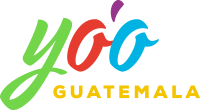
Case Study: Yo'o Guatemala
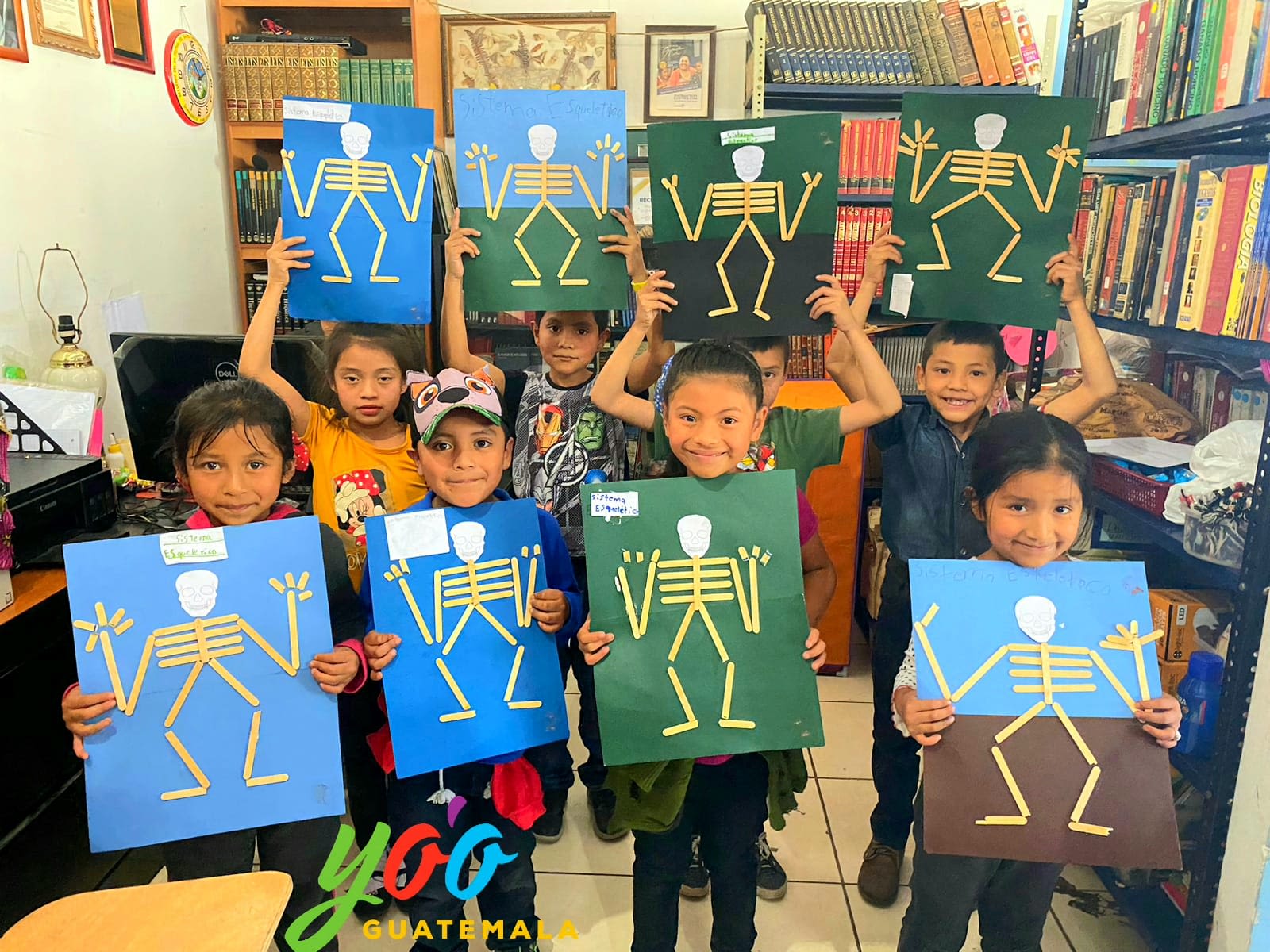
A legacy of education
After 36 years of civil war, the Peace Accords were signed in 1996, ending the conflict between the state and guerrilla forces. This period was a dark chapter in Guatemala's history, marked by a state led by military dictatorships that repressed and killed its own people. Urban and rural civilians, student and community leaders, and political opponents were the faces annihilated in a conflict that fractured the entire country.
According to the Historical Clarification Commission (CEH), the civil war left over 200,000 victims, dead and disappeared, and displaced more than one and a half million people. Cities and communities were filled with the dead, families mourned their losses, and their loved ones became ghosts; others were forced into exile, leaving behind their homes and lands.
The civil war was particularly noted for its targeted violence. The primary populations repressed and especially massacred were the indigenous peoples. The Guatemalan state's policy during the civil war was the genocide of indigenous peoples. Under the military state, there were numerous extermination and control programs directed towards indigenous communities: scorched earth, model villages, organization of civil militias, and forced recruitment. According to the CEH, 83% of the war victims were from indigenous peoples.
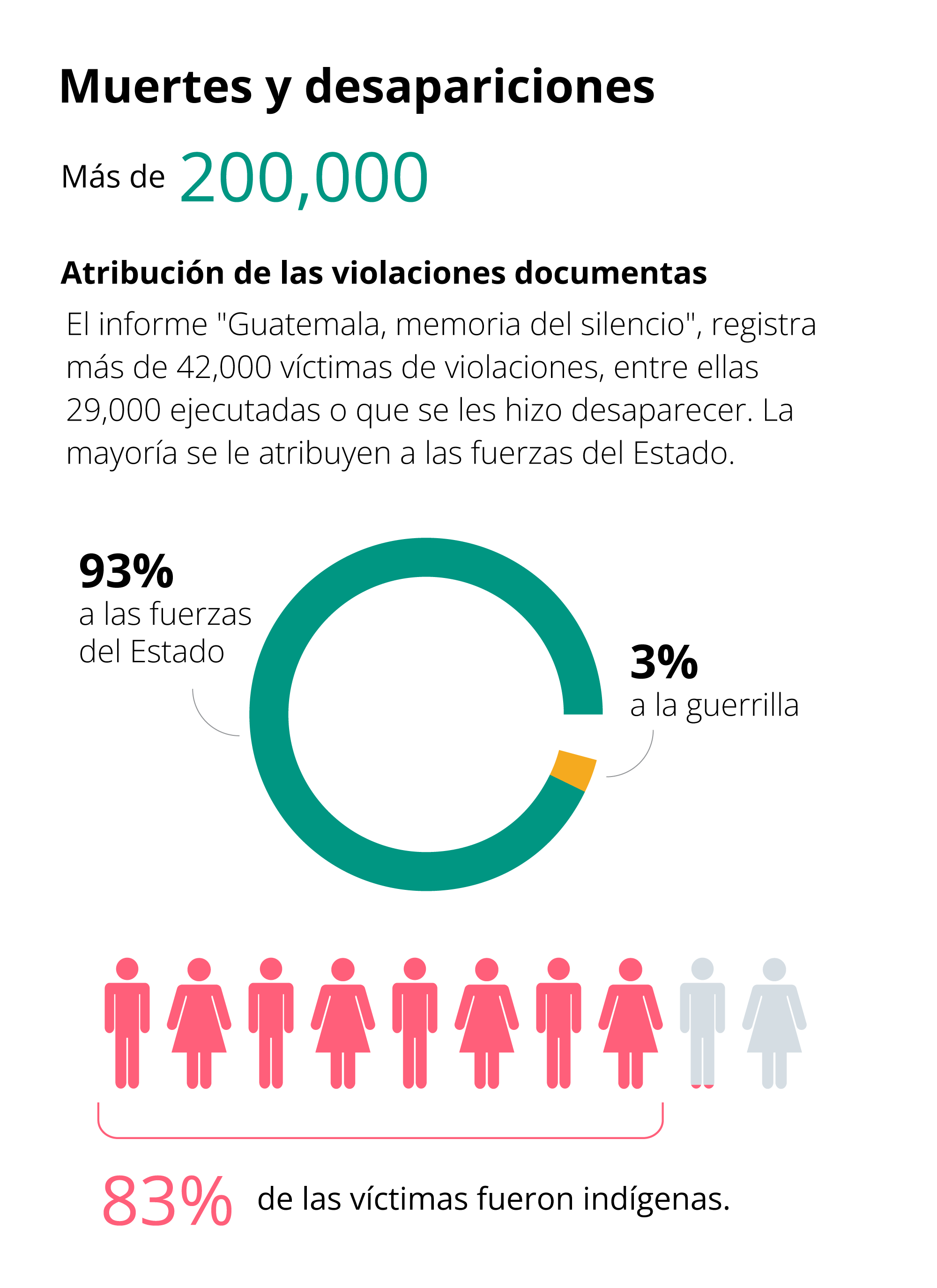
The legacy of the civil war was a trail of deaths, disappearances, and displaced people.
One of the thousands of victims was Bernardo Lemus Mendoza, a professor of economics at the University of San Carlos in Guatemala and notably a student leader within the university community and a civil dissident of the repressive state, who was murdered by military forces in 1981. His face is part of the human mosaic that confronted the dictatorships of the civil war but died in the commitment.
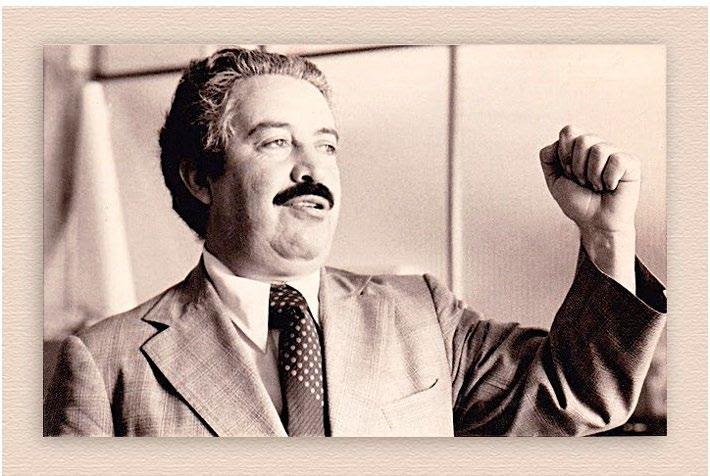
Bernardo Lemus Mendoza
Bernardo Lemus Mendoza
He was native to Purulhá, Baja Verapaz, a municipality surrounded by cold forests where the mist seeps through as if the sky had descended. However, for many of its residents, it has not been a paradise. Stricken by economic poverty and land tenure conflicts, Purulhá is a vulnerable and violated territory. The lack of basic services and employment opportunities has been a constant in the municipality's history, especially education.
Bernardo Lemus Mendoza studied in a public school in Purulhá under precarious conditions. He attended a literacy program for eight years. One of the teachers took him to take a proficiency exam to pass primary school. Later, he obtained a high school scholarship for an institute in Cobán, Alta Verapaz. There, he organized the students to collect signatures against a professor who was ineffective in teaching and suspected of failing his students. His school experiences marked him, and he later became the student leader, for which he was recognized.
After his murder, in Purulhá, he left behind a family. His children, now in the new millennium, rightfully demanded compensation from the state. Knowing their father's history and the harsh realities of the municipality, they planned to use the compensation money to build a diversified institute for the youth, who were forced to travel to neighboring municipalities in search of educational services due to the lack of such services in Purulhá. The intention was to continue their father's legacy and commitment.
Despite having obtained the state's approval, the government of Otto Pérez Molina (2012-2015), a retired military officer, decided to remove the financial compensation from the restitution plan for the Lemus family. Instead, they received Q5,000 and 200 books. The Lemus family donated the books to the municipality of Purulhá. At the family's request, the Bernardo Lemus Mendoza Library was inaugurated in 2011.
That year, the daughter conducted activities in the library. On one of those days, she noticed a group of children coming to do their homework. Inside, a girl was waiting for the printer to slide sheets of various contents made for teaching. Upon inquiry, she learned that the sheets were intended for the group of children because they were more useful than the 200 books exclusively about the internal armed conflict in the library.
This event marks the birth of Yo’o Guatemala.
The director of Yo'o Guatemala, Brenda Lemus, about the organization's work, the importance of post-pandemic educational recovery through the Recovering Education in Central America: Activating Networks and Associated Groups (RECARGA) initiative and the experience with the study case study guided by Population Council Guatemala.
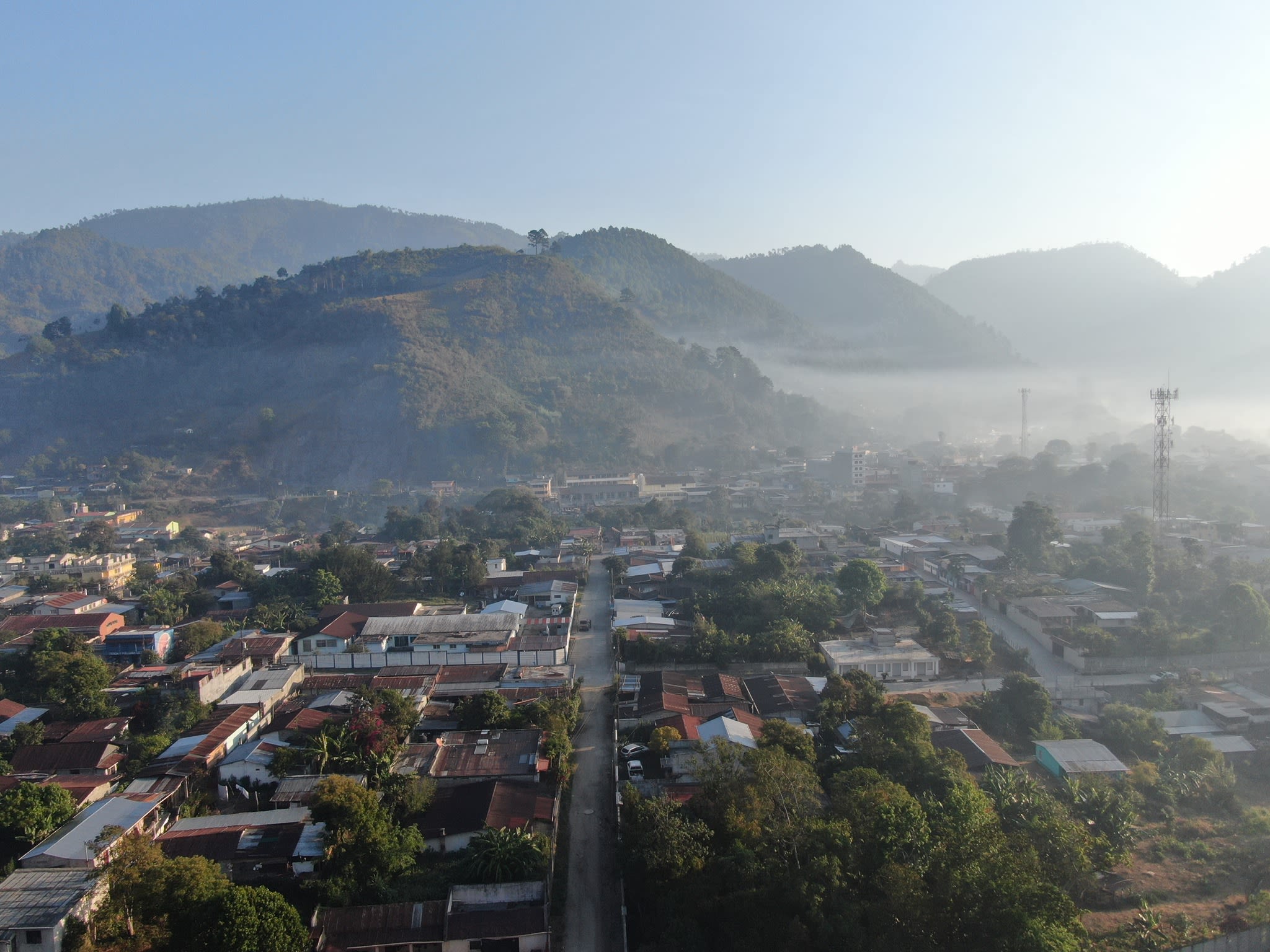
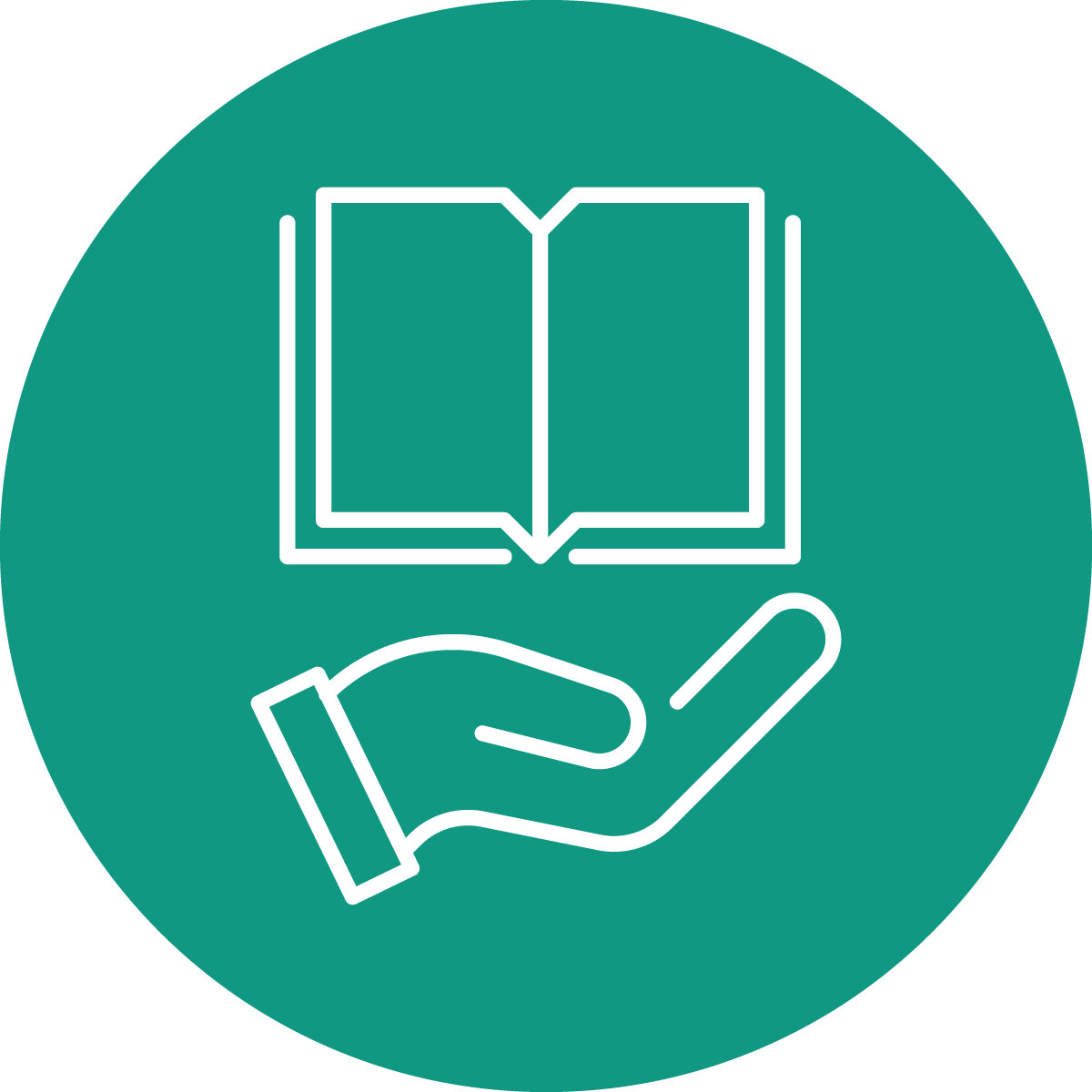
A historical context of Purulhá
Before delving into the story of Yo’o Guatemala, it is necessary to understand the history of Purulhá.
The municipality of Purulhá is located in the department of Baja Verapaz in what is known as the “Cloud Forest”. To the north, it borders the municipalities of Tactic, Tamahú, and Tucurú in the department of Alta Verapaz; to the south with Salamá, Baja Verapaz, San Agustín Acasaguastlán, El Progreso, and Teculután, Zacapa; to the east with Santa Catalina La Tinta, Alta Verapaz; and to the west with San Miguel Chicaj, Baja Verapaz.
Purulhá before the 20th century
The history of the municipality dates back to the pre-Hispanic period, although certainly not much data about that time are available. Some sources suggest that the first inhabitants were Lacandons, while others speak of a Poqomchí population.
During the colonial period, the municipality was known as San Antonio Purulhá. It is believed that the foundation of the municipality dates back to the early 19th century when families seeking land for livestock and water for cultivation began to settle. In official state documents from 1836 and 1839, the name of the municipality of Purulhá appears registered.
The Verapaces in the civil war
Between 1960 and 1996, Guatemala experienced one of its most violent chapters. The 36 years of war left endless consequences: poverty, fear, silence, a fractured social fabric, a weak state distrusted by the population.
The political violence and repression of those years were selective. Repression and terror, censorship, persecution, and exile were strategies used by the state to eliminate the opposition or those it considered “enemies”. With the use of these mechanisms, the internal armed conflict in Guatemala wiped out a generation of academic, political, student, union, and religious leaders.
The region of the Verapaces was one of the hardest hit throughout the war. It is one of the departments with the highest indigenous population in the country. After the democratic decade, the area began to experience systematic acts of violence. Over the years, the Guatemalan highlands became a target for the state due to the presence of guerrilla groups that influenced the area. The repression caused departments like Huehuetenango, Quiché, and both Alta and Baja Verapaz to experience exclusion, discrimination, and consequences of the conflict such as collective trauma (Caballero-Mariscal, 2017).
The Peace Accords were supposed to end the conflict, establish a democratic regime, and fulfill a series of promises to avoid repeating the brutality and cycle of violence in order to build a peaceful society and contribute to national reconciliation. This involved implementing a series of mechanisms for the repair and compensation of victims and their families in psychosocial, economic, material, or cultural matters. Like many other promises made by the state, this remains an outstanding debt.
Purulhá in the 21st century
Purulhá is predominantly a rural Maya territory. It should be noted that this is related to the high socioeconomic vulnerability that characterizes the municipality.
According to the XII National Population Census and VII of Housing, Purulhá has a population of 56,822 inhabitants, predominantly young; the age group between 0 and 24 years represents 64.96% of the population. 4% of the population identifies with the Ladino people and 95% with the Maya. 3% of the latter are part of the Achí linguistic community, 39% of the Poqomchí community, and 58% of the Q'eqchi'.
The municipality has a Human Development Index of 0.519, the lowest at the departmental level and one of the lowest at the national level. According to 2014 sources, Purulhá had a general poverty rate of 87.85% and extreme poverty of 31.07%. In addition, there is a high risk of food insecurity; the lack of land for cultivation, the production deficit, poverty, and the municipality's vulnerability to natural disasters create unfavorable conditions for the children of Purulhá.
About 46% of the population has some level of primary education, 12% has secondary education (8% basic and 4% diversified), and only 1% has higher education (degree), while 35% has no approved grade. Regarding education, the municipality has a deficit in coverage and educational quality, especially in secondary education (basic and diversified), which mainly affects the rural population.
A negative phenomenon in the education of Purulhá is school dropout. In the municipality, it occurs for various reasons, one of which is migration. Several children and adolescents are forced to leave school to undertake the journey to the United States, generally due to the lack of job opportunities and a dignified life.
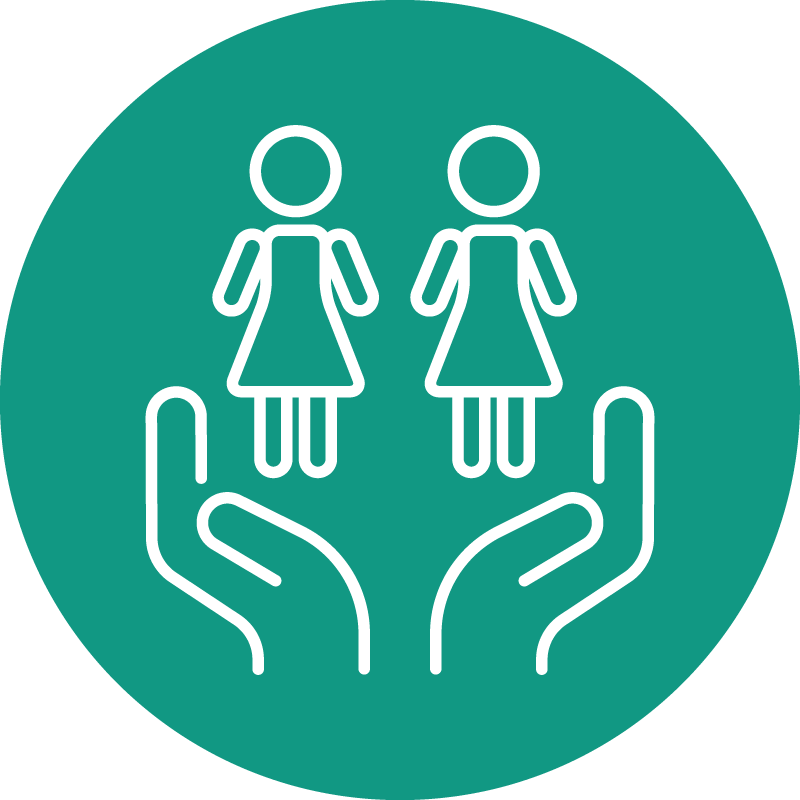
The beginnings of Yo’o Guatemala
It was 20121. Before encountering the group of children who frequented the municipal library, Bernardo Lemus Mendoza's daughter worked in a family restaurant. She noticed that the children approached the library with tattered and disheveled notebooks, their only school supplies, where they noted a jumble of contents without any structure. They also lacked books and other support materials to stimulate their learning. Moved by this dire situation, she decided to commit herself fully to education in Purulhá and left the restaurant to do so.
Alongside her brother, they envisioned a place where children could do their homework and access educational materials, particularly a dedicated educational space that the children lacked at home.
"In Purulhá, there are no tables in the houses. They eat on a bench, the mother serves the food, some eat on the bed, others eat outside, they don't sit around a table. They have a small table, the ones who are Catholic, to place their saints, but the children do their homework on a bench. They sit on the floor or on a container and write on the bench. The assignments go in dirty, they are folded."
They knew the then mayor, who after being persuaded, agreed to allocate a space in the municipal library. Later, the support extended: half of the second level was granted to establish an educational space for the children of the community.
The first practices
The primary demand and need expressed by the children was “help with school homework.” The daughter gathered them in the library to supervise and grade their homework. She also helped them complete exercises through guidance or by searching the internet for subjects and topics. In the absence of parental guidance, due to their work or personal reasons, she assumed the role of a mentor and supervisor. The work she did with the children was essentially a form of educational reinforcement.
Within the group, several children struggled to concentrate or appeared visibly exhausted. Surprised, the daughter inquired about the cause. One of the children confessed that he hadn't eaten all day. The lack of nutrition hindered these children's ability to perform well in their learning. Therefore, she began cooking them fortified rice, atol (a traditional corn-based beverage), and Incaparina. As important as education was, she recognized that nutrition was a more immediate urgency.
Meanwhile, she did not forget the need for school supplies and books, which the children barely had. With the help of her siblings, through social networks and word of mouth, they solicited donations of money or in kind: notebooks, school supplies, new or used books. They knew who to ask, so they gradually accumulated materials. They refurbished these materials to give them a second life, thereby equipping the library for the benefit of the children.
At the end of the year, when classes ended, the daughter encountered a group of children with little to do. Instead of allowing the idleness that follows the end of the school year, she decided to organize a vacation school she called “Un niño ejemplar” (An Exemplary Child). Here, she taught the children table manners, proper greetings, and other basic etiquette. At the end of the vacation school, the child with the highest scores won a bicycle. They also went on excursions and participated in games. The project was a delightful stir for the children.
During the vacation school, there was a directed reading activity. They read “The Little Prince” by Antoine de Saint-Exupéry together with guidance from the daughter. In this reading activity, she noticed several children with a fervent interest in reading. Eager for curiosity and knowledge, they devoured the books in the library. From this reading interest, an idea emerged for a trip to the capital to the national book fair.
"When I had to take them to FILGUA, my teacher told me, 'Look, I'm going to give you a fare so that four children can come.' Being at FILGUA, I let them go. People were impressed to see the little ones grabbing the book by the spine, the first thing they did was read the back cover, and they flipped the pages properly. Then, the group of intellectuals offered such a book to the children, but they replied, 'No, I am looking for Les Misérables by Victor Hugo,' and the people were like, 'What?!' That caused an impression. To the point that I was interviewed on Guatevisión."
All these activities in the first year witnessed the birth of what would later become the backbone of the work of Yo’o Guatemala. School reinforcement would become school tutoring, children's nutrition in the school nutrition program, fundraising for donations in school supplies, and the vacation school's reading activity in the reading club. These general programs constitute the child pedagogy of Yo’o Guatemala.
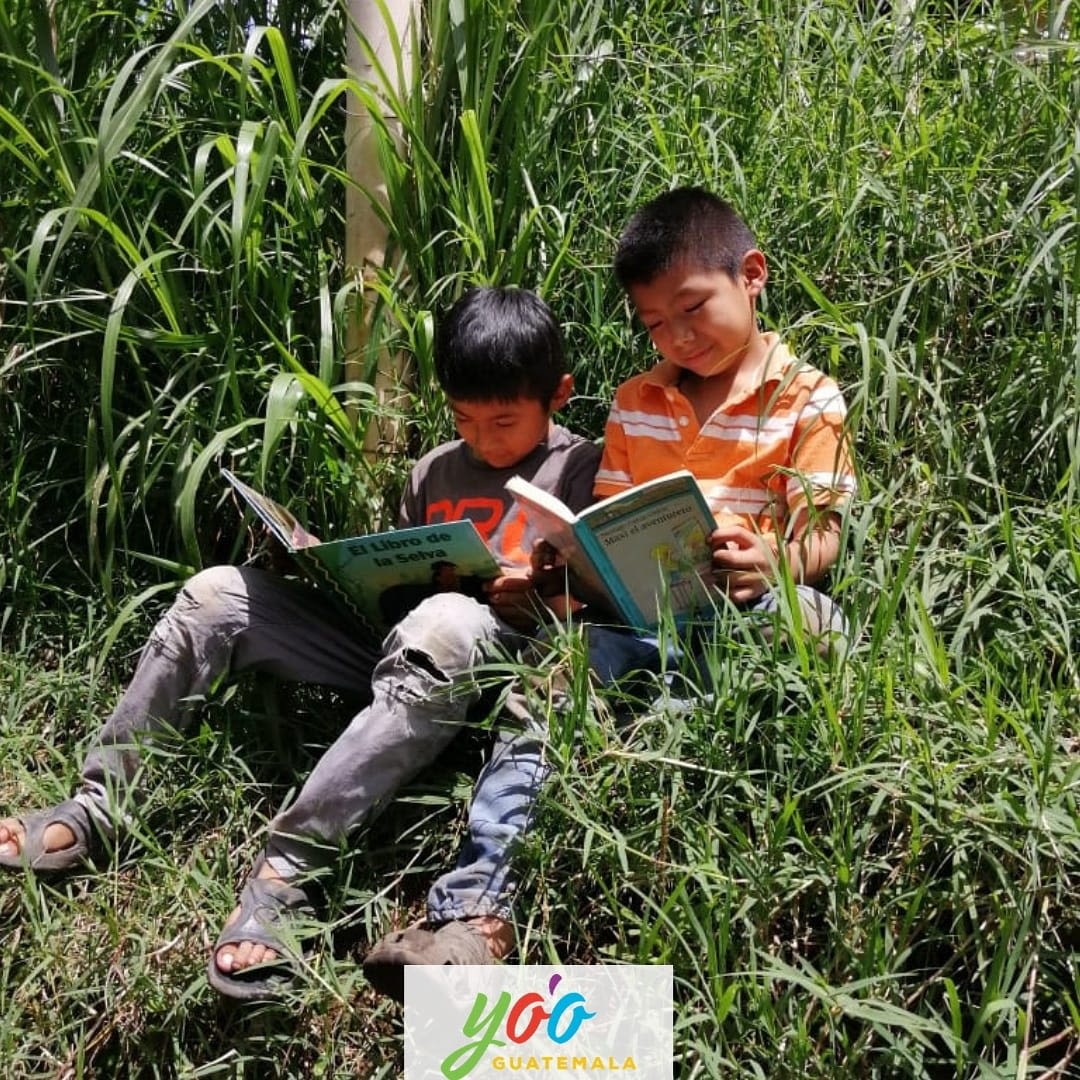
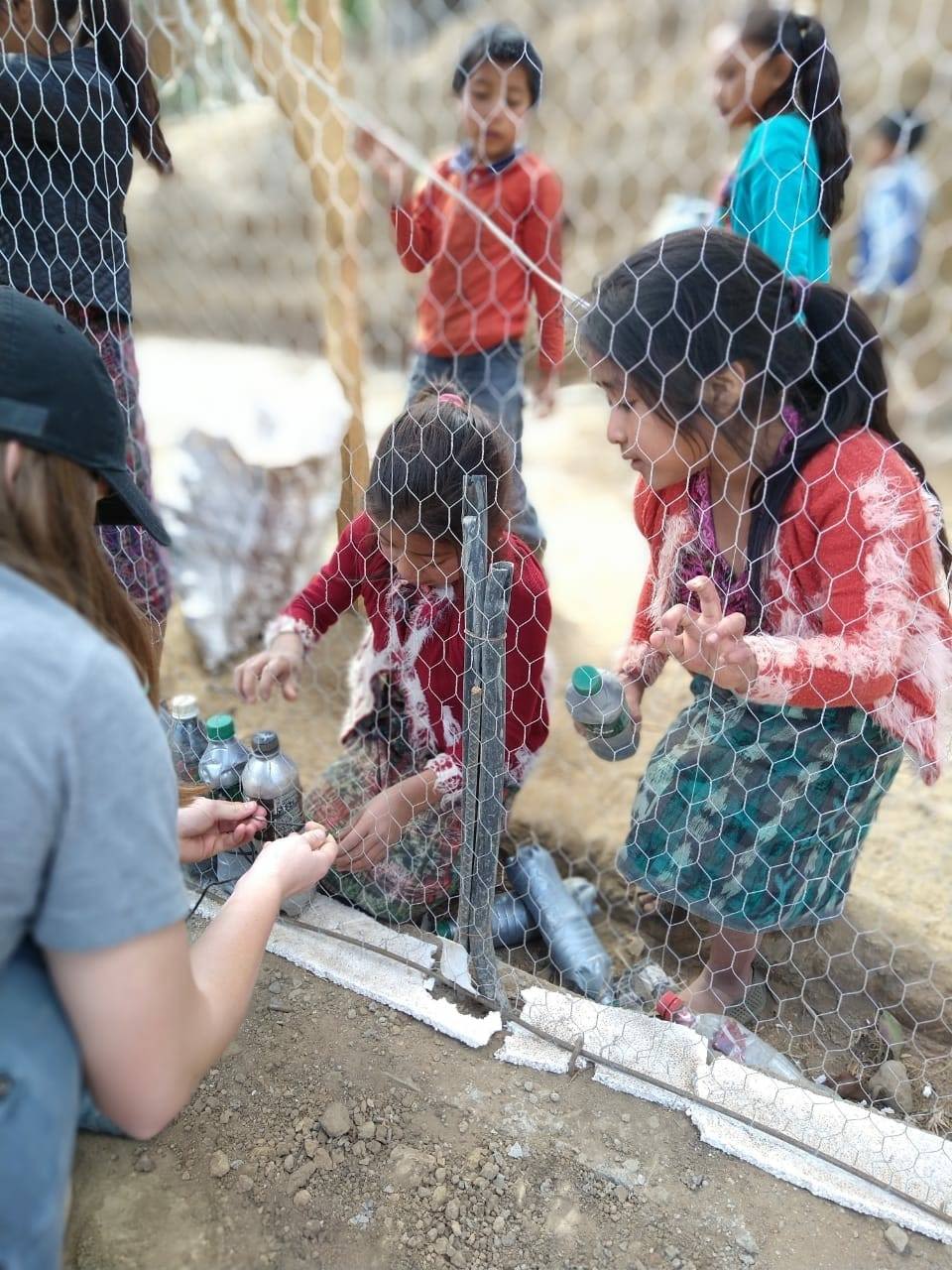

Complete childhood: an integral work of Yo'o Guatemala
In 2014, Yo’o2 Guatemala was legally registered. The first board of directors consisted of members of the Lemus family and friends. However, it was later reduced to a committed group of professionals. Since then, Bernardo Lemus Mendoza's daughter has served as the director of the organization.
After the institutional formalization of Yo’o, the excitement exceeded the board of directors' expectations. They discussed ideas and proposals for numerous projects with various focuses and objectives, intending to replicate the experience of school reinforcement in other departments of the country. After careful consideration, they concluded that their ambitions were dispersed, that they needed to start slowly, and prioritize efforts and programs. Thus, they defined the education of Purulhá as Yo’o’s main mission.
The experiences prior to the legal registration of the organization were sufficient for the Yo’o team to determine a founding principle: comprehensive childhood. Throughout activities such as vacation school, school reinforcement, and the collection of school supplies, they observed the multiple facets of life that affect the children of Purulhá, especially those studying. Children faced difficulties studying due to a lack of educational resources or ineffective teaching in public schools, many with attention and concentration issues because they had barely eaten during the day, along with restrictions on personal fulfillment due to precarious socioeconomic conditions.
Given this, education could not be limited only to teaching but needed to be extended to aspects such as nutrition, play, and overall well-being. To address these needs, they worked on and strengthened a child pedagogy that keeps comprehensive childhood at its core.
Strengthening education: school tutoring
The school tutoring program is the pedagogical evolution of the early years of school reinforcement at Yo’o Guatemala. For most of the organization's life, the tutoring sessions took place in a dedicated space in the municipal library. Currently, they have their own facility, which they call the "little school."
The tutoring involves gathering a group of primary school children, divided by grade level. Different educators assigned to each grade supervise and guide the children's work with their homework, activities, or school projects. They provide support to the children in their assignments, use the internet to support their research, and teach various subjects and content to reinforce their educational development.
Over the years, after becoming known in the community and among the schools, they have also welcomed teenagers from basic education. In addition to tutoring, they have implemented a program for these young people that develops and strengthens their capabilities, teaching them mathematics, computer skills, and internet use.
Moreover, in Yo’o's vision, reinforcement is not only about academic skills but also about the personal and political empowerment of the youth. Therefore, they have a personal development program. Within this, they implement leadership diplomas, exchange programs, workshops on conflict resolution, trust circles, and safe spaces. The goal is to foster community outreach among the youth and promote empowerment, as well as give them the opportunity to see the world beyond their communities.
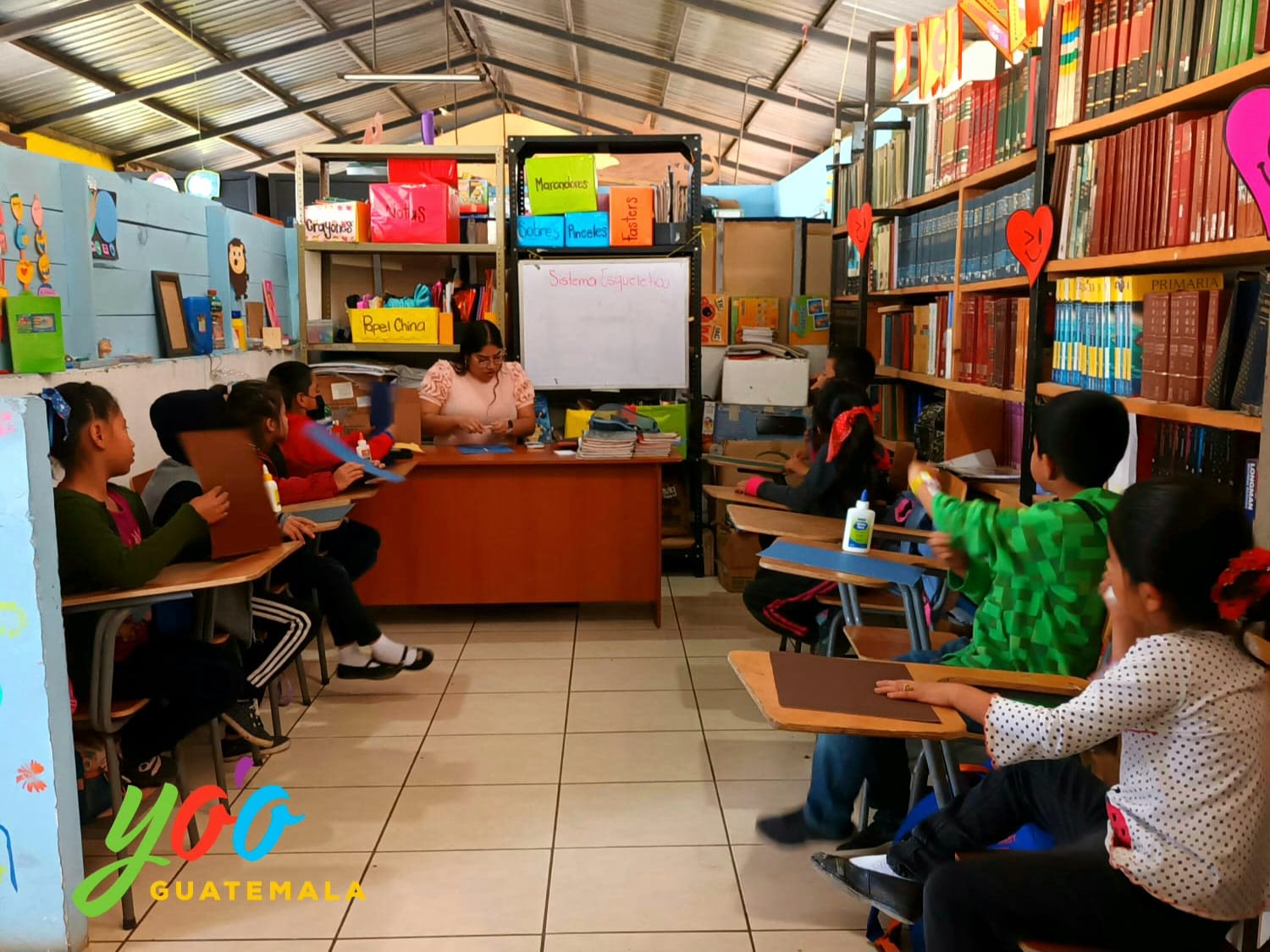
Complementary provisions: school balances and other programs
Yo’o Guatemala provides a range of supplies to the children and youth in its programs. These supplies include educational materials and safe spaces. This diverse provision aligns with the vision of holistic childhood development, addressing the complexities of education in a context of poverty and vulnerability. Thus, it serves as a complementary axis to the support of Yo’o's children and youth.
From the early days of the organization's work, the need for school supplies was evident. The solution was fundraising through donations, either in kind or money, from individuals via social media or close circles.
This early activity evolved into the School Supplies Exchange, known as “Donate Your School Supplies.” They have maintained the original dynamic to some extent, still relying on individual donations. However, they have grown by building partnerships and gaining recognition, securing funding directed to the program.
From 2015 to 2019, fundraising events were held where donated school supplies were stored in collection centers, packed into boxes, transported to a warehouse, and finally sent to Purulhá.
Initially, the donated school supplies were given for free to the families of Yo’o's children. However, they noticed that the families showed disdain towards free, second-hand materials, often abandoning them. Therefore, they devised a new approach: an exchange system.
"Everyone refurbished the supplies. The supplies were checked, erasers and backpacks washed. I started giving out the supplies, half used and half new. Then it was noticed that the new items were kept, but the used were left behind. The problem was that I was giving them away. So I started asking for bottles, 10 per school list. For example, a lady came with 75 bottles and asked for three lists. Later, I started asking for eco-bricks."
The school supplies depend on a group of volunteers who also support other programs in parallel. The volunteers range from individual people associated with the Yo’o team, and especially the young participants from some of the organization's programs.
For example, the scholarship program provides volunteers. Scholarships are awarded to primary and basic education students, although in 2018 the first university scholarship was given. The scholarship recipients receive footwear, clothing, hygiene products, school materials, and financial support. Upon receiving the scholarship, they commit to performing certain hours of volunteering, a fundamental requirement.
On the other hand, Yo’o Guatemala provides nutritional programs to the children and youth, especially for the school tutoring sessions. The economic poverty conditions in Purulhá are acute in several cases to the point that children do not have decent nutrition. In this context, they have developed nutritional programs that provide snacks and lunches to the children of the school tutoring sessions.
Thus, nutrition is a simultaneous facet in the education at Yo’o. They have also faced cases of abuse and neglect, which they have refused to turn a blind eye to. Hence, a child protection project emerged at Yo’o to address this issue.
Since 2016, the organization has operated a student residence. Initially, they accepted both boys and girls but decided to receive only girls due to their deep vulnerability.
"One of the goals of the residence, apart from educating vulnerable girls, is that it be comprehensive, that they receive food, rules. Then the residency program is implemented. By trial and error, there is a need, there are rules, limits to be met. Some girls were not comfortable: they would come in, look around, and leave. The girls who are in the residence also participate in other programs."
The student residence thus functions as a refuge for vulnerable girls. It is also a programmatic center since they work with them on various programs: school tutoring, nutrition, formative courses, reading club.
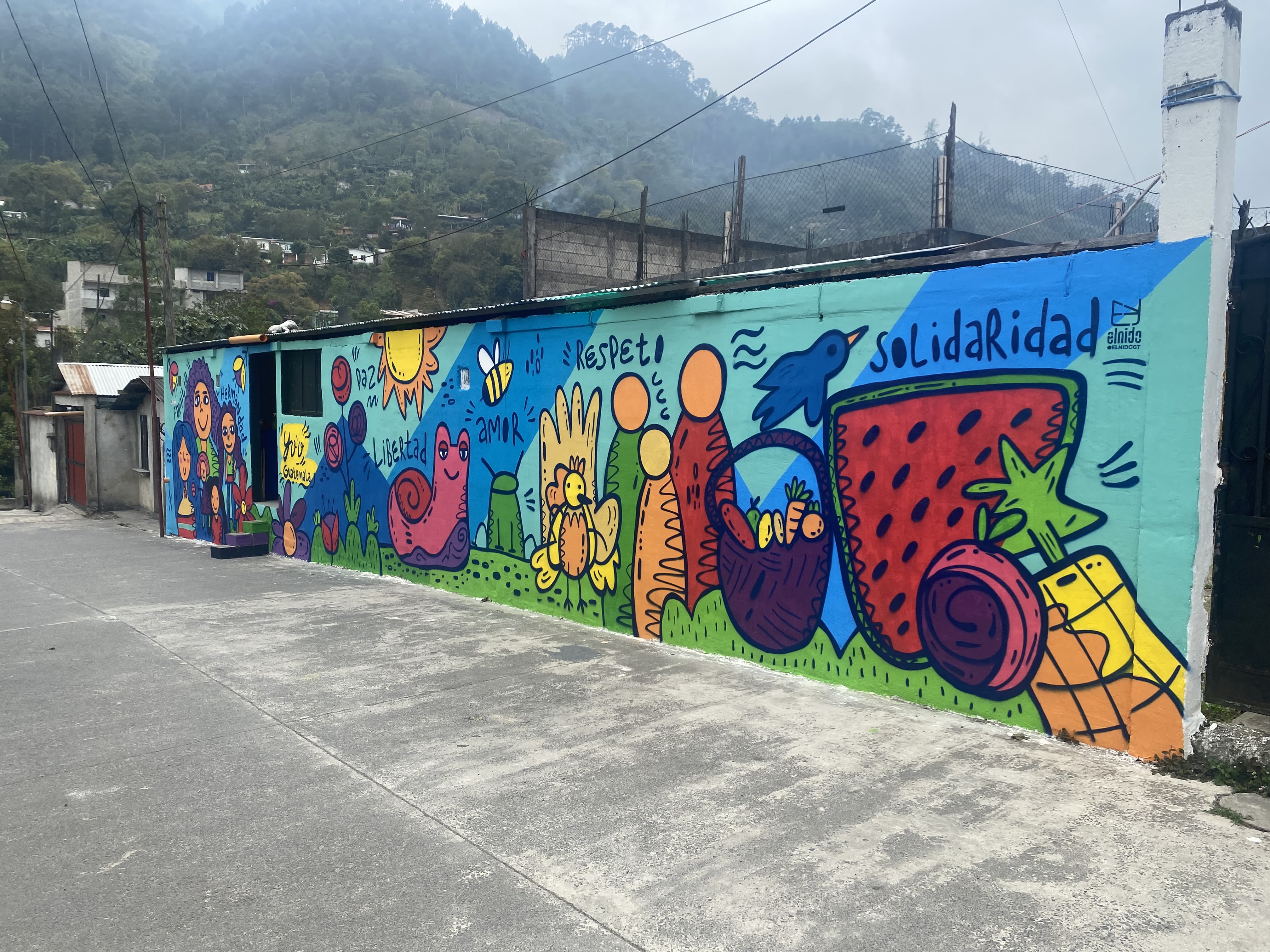
Reading as a journey
The first vacation school brought to light the reading program. The genuine and voracious interest some children showed, awakened by the stimulation they received from the school for reading, was a revelation for the director at that time. Moreover, the trip to FILGUA, where fair attendees were stunned by the excited exploration among books by children from rural communities of Purulhá, confirmed an opportunity too good to miss. Thus, the reading club, the flagship program of Yo’o Guatemala, was born.
In the reading club, children learn to read accompanied by an educator. It is a directed and guided reading of one or more specific books. At Yo’o, they recognize that reading is a gradual, progressive process. Therefore, the first reading steps are oriented with graphic books, then they transition to hybrid books (textual and visual). At the end, they evaluate with reading comprehensions to mark and check their progress.
Moreover, the reading club is not limited to teaching reading but also stimulates and instills the habit of reading. They have a system of incentives and rewards. Thus, a child who reads a certain number of books, for example, is gifted books of their choice or, most importantly, is accepted for annual excursions. These strategies have created new readers and reaffirmed the interest of child readers.
However, the success of the reading club primarily resides in the methodology with which they teach and connect reading with the children. In 2013, at the beginning of the organization, the director enrolled in a workshop on intelligent reading comprehension from a group called the International Reading Workshop. According to this methodology, reading for the child should be guided during which they are encouraged to reason, to question the content, to "challenge the thought."
"They taught me this technique of getting you to think about things that the book has that the child infers to get them to reason. For example, there was a story that said that Cinderella's stepsisters had cut off their toes so the shoes would fit. You ask, 'And what do you think, did they really cut off their toes?' 'No, because they wouldn't have been able to walk; they would have had to go to the hospital.'"
However, reader reasoning is intimately linked to the effect and affect of connection. It does not just remain a rational and critical exercise but is also emotional and personal. Thus, in guided reading, a link is established between the child, their experiences and life, and the content. Reading then becomes a mirror, a sounding box, a link.
"When you ask them what part of the book they liked the most, they usually answer something that emotionally touched them. Almost always their favorite part is something that emotionally affected them. So, I started to see that when you touch their limbic system, the brain begins to store reading as a personal experience and not just as entertainment. Then a connection is formed between the child and the reading, between the child and you."
Being a horizontal methodology, as the guide is not imposing nor is the educator the only interpreter of the reading, and being a conversational activity, there is a bond between the educator and the child. There is an openness of the child to express themselves, to share their experiences and problems. In this sense, the reading club is also a space for affective connection.
In Yo'o, reading becomes a world of possibilities, due to the journey that it means to embark on a story. Likewise, the literal journey that reading has allowed for the children and young people in the program. For economic or family reasons, many of these children and young people have never left their communities. In the reading club, after finishing the annual cycle, they go on excursions to tourist or recreational sites, whose program they call Beyond my community, with the children and young people who met the reading or other program requirements.
The reading club maintains the purpose of expanding the horizons of children and young people, teaching through exploration and marveling at the world. The Yo'o team remembered the time they traveled with the club group to the sea; The children had never seen it, but they found themselves overwhelmed and stupefied by the novelty and immensity of the sea. It was a representative trip, because in Yo'o reading is an opening, an excursion to the sea of knowledge and life. For Yo’o, reading is essential because, as the Yo’o team emphasized, “a child who reads educates himself.”
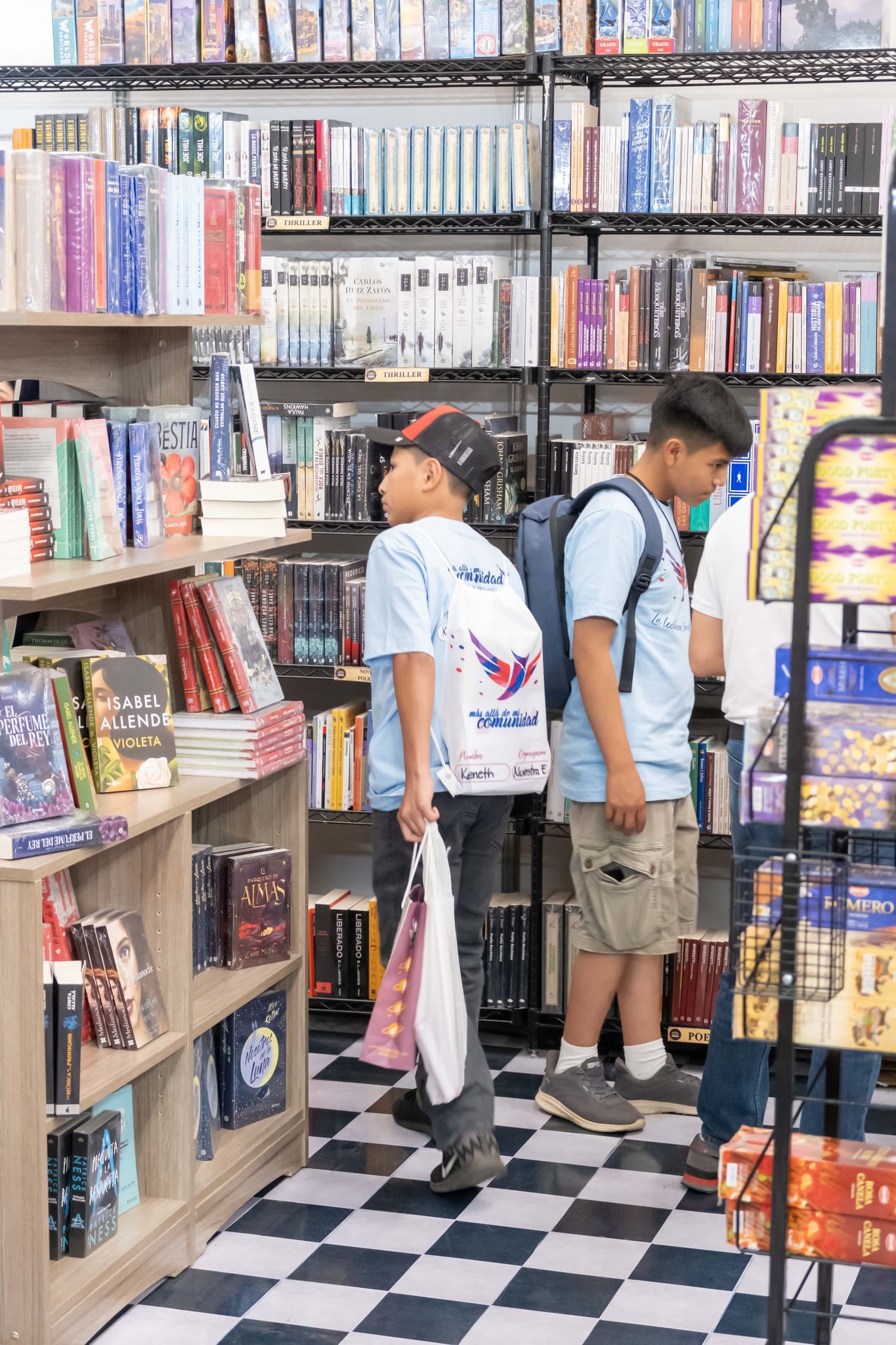
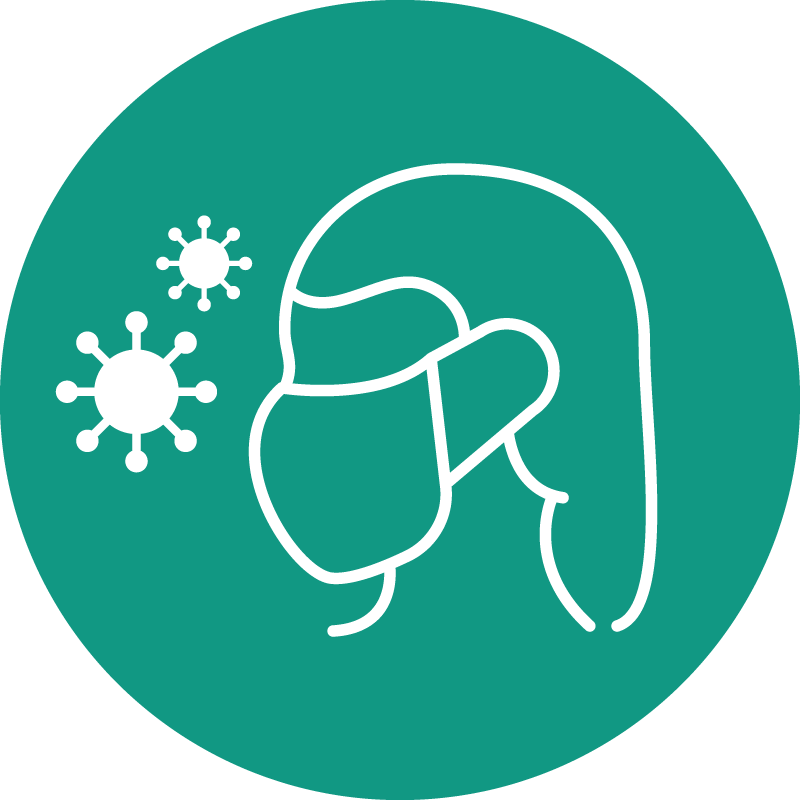
Yo’o in pandemic times
Since 2012, Yo'o Guatemala's institutional and professional growth has not stopped. The educational programs, for 2020, already had a specific direction, a consolidated structure and a positive progress. Gradually, the organization grew with each new project, each program worked on, each new child who arrived.
However, at no time was it foreseen that a global pandemic would break out in the way that COVID-19 did. In a matter of days, after the arrival of the virus in the country was made official, the government decreed a national quarantine that closed companies, markets, shopping complexes, schools, and colleges. Thus, the COVID-19 pandemic interrupted the work and trajectory of Yo'o Guatemala.
Adaptations in the pandemic
During the pandemic, social distancing and hygienic measures were the norm above all. Children and young people were forced to remain at home. Without the presence that essentially defined any activity in the educational programs, the organization was forced to adapt, which was both urgent and necessary. Faced with this absolutely unforeseen pandemic irruption, the Yo'o Guatemala team did not remain paralyzed.
One of the organization's first adaptations was to prioritize humanitarian assistance over any educational program. Thus, several programs were temporarily suspended: the student residence, the nutrition program in school tutoring, and field trips. Instead, school scholarships became food scholarships. A food package was given to the mothers of Yo'o's children and young people so that they could survive in the drastic reality of the pandemic.
Another humanitarian program, which is still ongoing, was the Adopt-a-Grandparent program. Upon learning of situations of abandonment and loneliness in several elderly people, they collected food to donate to them in cases of extreme emergency.
Now, the collection of school balances stopped during the pandemic. In 2021, when Yo'o Guatemala's institutional work recovered some normalcy, the number of children coming to exchange ecoladrillos for school supplies was reduced. Hence, they suspended the program indefinitely. Instead, they returned to the direct provision of school supplies to children participating in scholarships and other programs of the organization.
Another adaptation was the home library that reconfigured the reading club. Unable to bring children and young people together in the municipal library because of quarantine rulings, the Yo'o team decided to bring reading into homes.
All the children were going to borrow books, but because of the restrictions they could not go. So we came up with the idea of going with the books. For some months we visited from house to house, library to home. We took a variety of books, on specific days, not every day we went to the same houses. The families would set up a table for the children to choose books. The mothers would put out cups of fresh fruit and bread. That's how we did the reading checks, from house to house.
On the other hand, the idea of a project related to food sovereignty had already fluttered in Yo'o, especially in a context where malnutrition was a common problem. The pandemic sharply highlighted the importance of the issue. Thus, with training and guidance from the Ministry of Agriculture, Livestock and Food, they developed the home garden project. In it, a member of the Yo'o team came to teach and guide the cultivation of different agricultural products in the fields of families in the community.
Finally, in Yo'o they noticed that virtuality, the improvised modality that was adopted in education, did not sufficiently, often not even minimally, meet the need for education. Both the team and the families of the children and young people observed a sharp deterioration in education. Therefore, the Yo'o team implemented the program Qa Tzoleb'aal, Our School. Faced with the need to provide quality education, Yo'o enrolls several students in ISEA or IGER for distance education. Yo'o's educators function as facilitators of the content and platforms offered by ISEA and IGER. Yo'o has also provided the spaces where students receive the courses.
Between the pandemic and the future
The return to classes in 2023 meant, in a small part, a relief for Yo'o Guatemala, since the official measures of social distancing were lifted. Therefore, the presence of classes and activities was recovered. However, the relief paled in comparison with the critical and deteriorated panorama of post-pandemic education.
In the face of this drastic context, legacy of the COVID-19 pandemic in collusion with the state's inability to address it, Yo'o has continued its work, reaffirming its commitment to education in Purulhá. After a long time, for example, the municipal library ceased to be the center of Yo'o's activity, as they inaugurated in 2024 their new building where they will receive the children and youth of the programs.
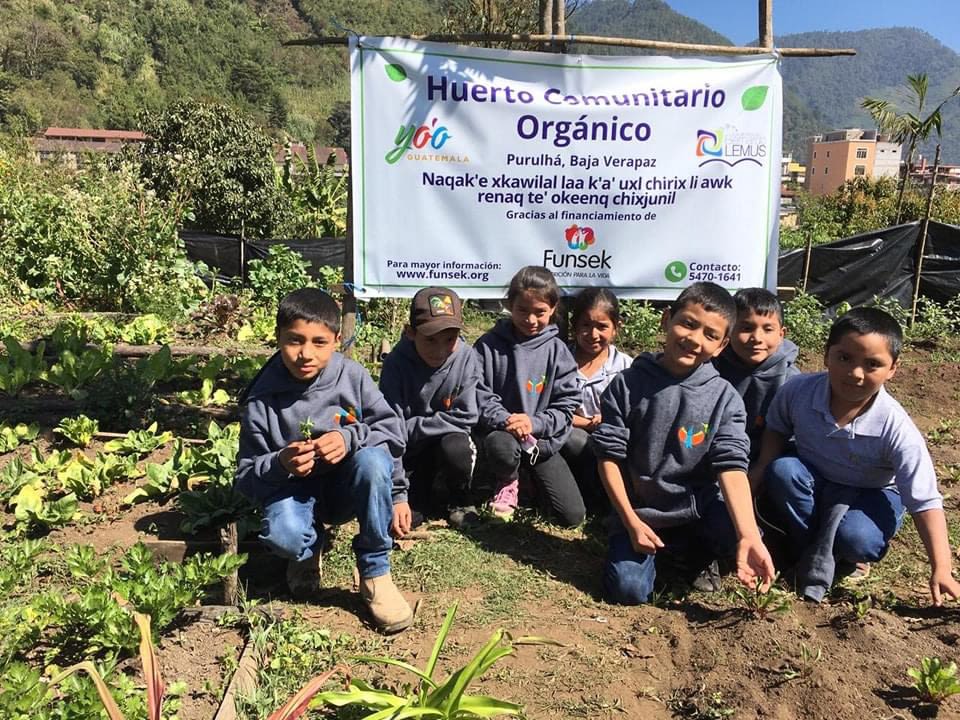
Children participating in the cultivation and care of the Yo'o Guatemala community garden.
Children participating in the cultivation and care of the Yo'o Guatemala community garden.
Likewise, the family gardens, as has been characteristic in Yo'o, evolved into the community garden program. Now, on the land that a neighbor of the community has made available to the project on a temporary basis, without requiring any payment for the use of the space, they cultivate agricultural products. They then offer the products to people in the community in exchange for volunteer work for the care of the garden, economic donations or donations in kind. These contributions help support the organization's other nutritional programs. The community gardens are also intended to teach the cultivation of the land, with traditional indigenous knowledge, to children and youth in their programs, as well as to function as a recreational activity in place of vacation school.
Now, in the future of Yo'o are the continuity and strengthening of existing programs, which since 2021 have resumed the march that interrupted the pandemic. On the other hand, they have been thinking about new projects and plans for Yo'o. For example, they have a strong desire to strengthen My beautiful child program. Faced with the problem of malnutrition, in 2019 they will launch the program for infants, with the purpose of implementing early stimulation activities and weight and height monitoring. Unfortunately, the pandemic cut the program short. However, they consider this proposal to be fundamental, making the program one of Yo'o's main programs.
Finally, they do not neglect institutional growth. They wish to concretize an institutional strengthening, in which Yo'o's staff will benefit from social benefits and better salaries. To this end, they have begun a process of discussing a strategic plan.
Yo'o Guatemala has faced countless adversities, due to a difficult rural context of poverty and vulnerability and the irruption of the merciless pandemic that halted much of the progress made. However, in Yo'o they are clear that the future is a road to be traveled between the organization, Purulhá and the youth towards a recovered education.
Notes
General notes
This product was designed, visualized and written by the Population Council Guatemala team, with collaboration and feedback from the Yo'o Guatemala team, for the project Recovering Education in Central America: Activating Networks and Associated Groups (RECARGA).
The images presented were taken from Yo'o Guatemala's social networks shared by its team or photographed by the Population Council Guatemala team. In external cases, the source was indicated.
Specific notes
1. On February 22, 2024, the Population Council team held a participatory workshop, lasting six hours, at the Yo'o Guatemala facilities. 11 people from the Yo'o Guatemala team participated.
The objectives of the workshop were, through a guided group discussion and a timeline, a) collect the local history of Purulhá, b) document the organizational and educational development of Yo'o Guatemala, especially during and after the pandemic and c) understand the educational ecosystem in which the partner is located.
One of the products was this case study in the form of a narrative history, prepared after a process of systematization of the workshop, bibliographic review, statistics, audiovisual archive and interview. The shorthand was a collaboration between Population Council and Yo'o Guatemala.
2. The name "Yo'o" comes from a Q'eqchi' word. Its literal translation into Spanish is "let's go." Thus, according to the organization, "Yo'o is an exhortation to the community to walk the path, together." See more information in this tweet.
Bibliography
Caballero-Mariscal, D. (2017). Ecos del enfrentamiento armado guatemalteco veinte años después del conflicto. El arraigo de la violencia. Revista LiminaR, 16(1), 150–168.
Concejo Municipal de Purulhá. (2018). Plan de Desarrollo Municipal y Ordenamiento Territorial, municipio de Purulhá, Baja Verapaz 2018—2032.
Guirola, A. (2023, septiembre 1). Baja Verapaz en alerta por migración de menores de edad. Canal Antigua. https://canalantigua.tv/2023/09/01/baja-verapaz-en-alerta-por-migracion-de-menores-de-edad/
Instituto Nacional de Estadística Guatemala. (2018). XII Censo Nacional de Población y VII de Vivienda.
PBI Guatemala. (s/f). El derecho a la tierra bajo amenaza en las Verapaces: Desalojos en tiempos de COVID-19. PBI Guatemala. Recuperado el 11 de abril de 2024, de https://pbi-guatemala.org/es/news/2020-05/el-derecho-la-tierra-bajo-amenaza-en-las-verapaces-desalojos-en-tiempos-de-covid-19
Programa de las Naciones Unidas para el Desarrollo (PNUD). (2022). Desafíos y oportunidades para Guatemala: Hacia una agenda de futuro. La celeridad del cambio, una mirada territorial del desarrollo humano 2002—2019 (p. 424).
